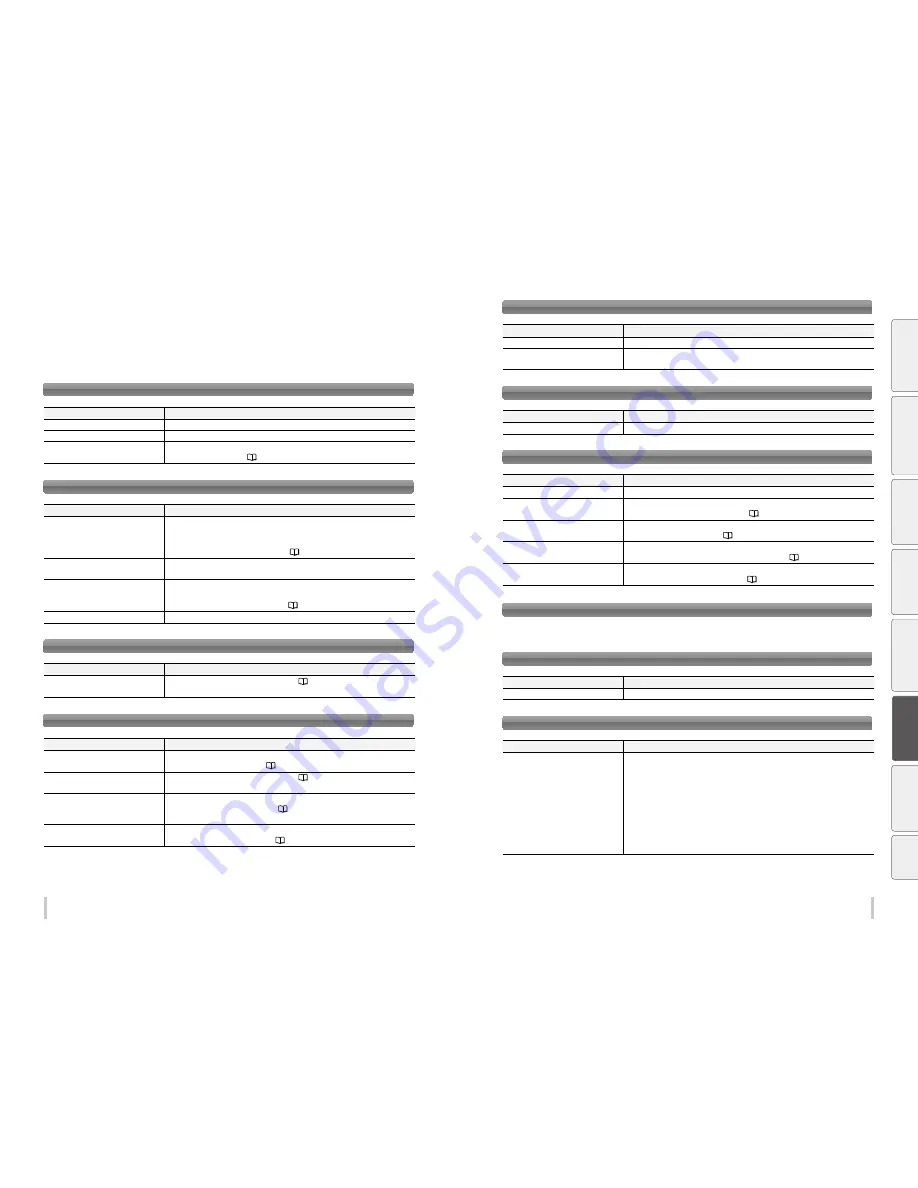
168
169
Troubleshooting
Troubleshooting
Check the problem
Before deciding that there is a serious problem with the printer, check the following items.
Power does not turn on.
Items to be checked
Corrective measures
Power cable connection
Check that the power cable is correctly plugged into the power outlet.
Power supply to the outlet
Supply power to the power outlet.
Power switch on/off
Turn on the power switch.
See
Turn the printer on
on
page 29
.
The paper guide is not heated even when the heater is turned on.
Items to be checked
Corrective measures
Printer status
The paper guide is heated during printing or when the heater is turned on with the
heater control menu. Make sure that the paper guide is heated by printing the nozzle
print pattern or set the heater to ON.
See
Adjust the heaters temperatures
on
page 157
.
Host computer RIP software setting
The heater temperature can also be set in the RIP software on the host computer. Check
the host computer setting.
Heater control menu
Turn on the heaters (afterheater/printheater/preheater) again, and then print the nozzle
print pattern or forcibly set the heater to ON to check that the paper guide is heated.
See
Adjust the heaters temperatures
on
page 157
.
Power voltage
Connect the printer to 200 V AC power.
The printer does not start or operate correctly.
Items to be checked
Corrective measures
ERROR LED and message on the
operation panel
See
When an error message is displayed
on
page 173
.
The printer cannot print.
Items to be checked
Corrective measures
USB cable connection
Connect the USB cable correctly.
See
To connect the USB cable
on
page 31
.
ERROR LED and message on the
operation panel.
See
When an error message is displayed
on
page 173
.
Error LED off
Print the nozzle adjustment pattern.
See
Print the nozzle print pattern
on
page 80
. (Confirm that the RIP software
Test pattern
is printed.)
Print head cleaning
Clean the print heads.
See
Performing normal cleaning
on
page 79
.
Although the printer is in the print mode, printing does not start with
PREHEATING
displayed on the operation panel.
Items to be checked
Corrective measures
Room temperature
Raise the room temperature. (Recommended temperature: 20 to 25ºC)
Effect of air flow
If the air from an air conditioner or a fan is blowing against the paper guide, change the
air flow direction, the orientation of the printer, or the location of the printer.
The transmitted data is not printed.
Items to be checked
Corrective measures
ONLINE LED (flashing?)
Check the communication conditions to the host computer.
Media jams occur frequently.
Items to be checked
Corrective measures
Media type
Check whether the media type setting matches the type of media installed.
Media installation
Install the media properly.
See
Loading the media on the printer
on
page 36
.
Obstructions in the carriage path or the
media path
Remove any obstructions.
See
How to clear media jams
on
page 171
.
Suction fan power
If the suction fan power is not proper, reduce the power.
See
Prevent the media from sticking and wrinkling
on
page 135
.
Heater temperature setting
If the heater temperature is not optimally set, lower the heater temperature.
See
Adjust the heaters temperatures
on
page 157
.
Print quality is poor.
See Solve print quality issues on page 184.
Printout are blank sheets.
Items to be checked
Corrective measures
Print data
Check the current print data to confirm that you sent blank sheet data.
Printing is slow. The carriage sometimes moves.
Items to be checked
Corrective measures
USB connection speed
When the data transmission speed is slow, the printer waits for the data with the print
heads capped.
Check the USB’s transmission speed. If the USB connection is full speed, the speed can
be improved by changing the conditions of the connection to the computer as follows,
so that the connection becomes high speed.
- Reconnect the USB cable.
- Connect the USB cable to the USB 2.0 port.
- Reinstall the driver.
- Change the USB cable to a cable supporting high speed transmissions.
- If a hub is used, change the hub to a model supporting high speed transmissions.
Be
fo
re
p
rin
tin
g
Lo
adi
ng
the
m
edi
a
A
dj
us
tm
ent
M
ai
nt
enan
ce
A
dv
an
ce
d
op
er
ati
on
s
Trou
ble
sh
oo
tin
g
M
enu
tr
ee
Ap
pe
nd
ix
Summary of Contents for IP-6620
Page 112: ...222 ...
















































